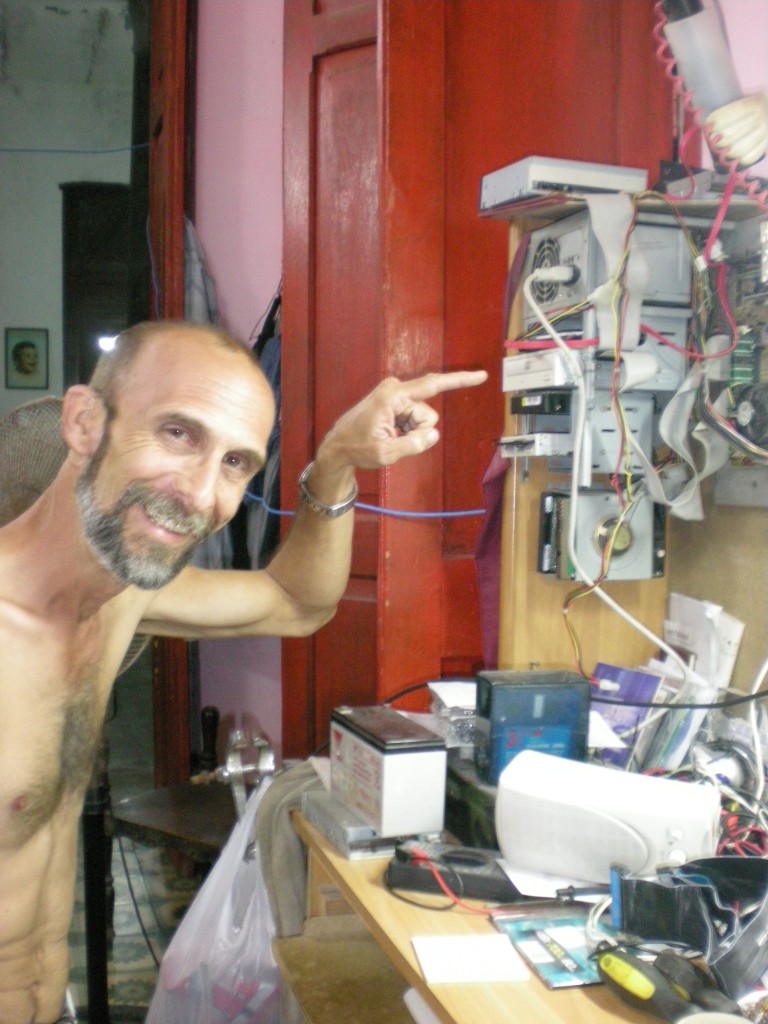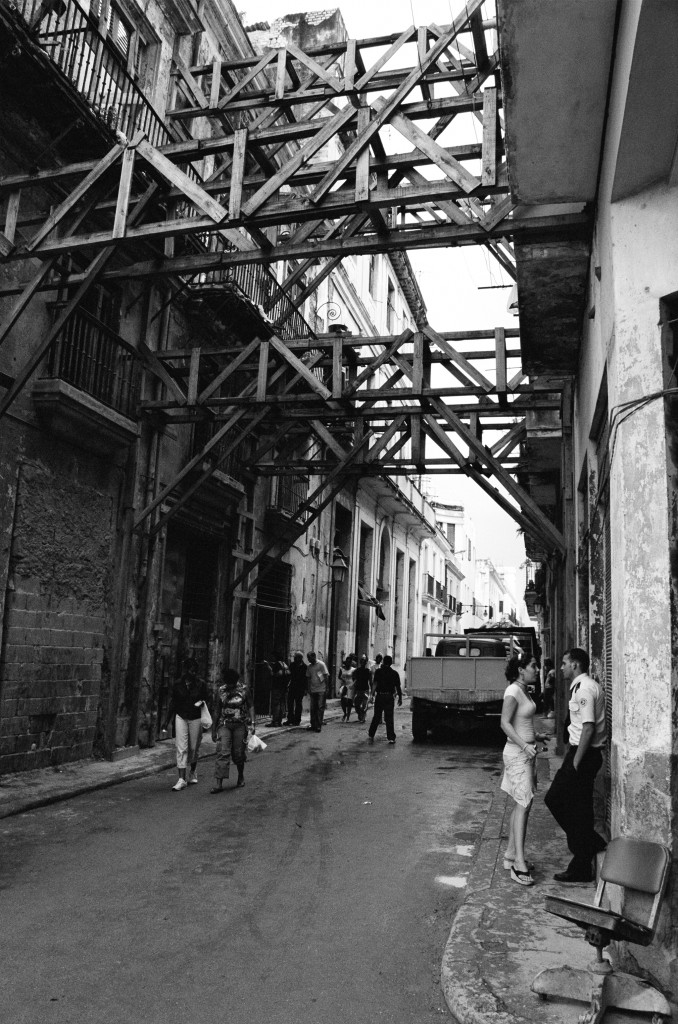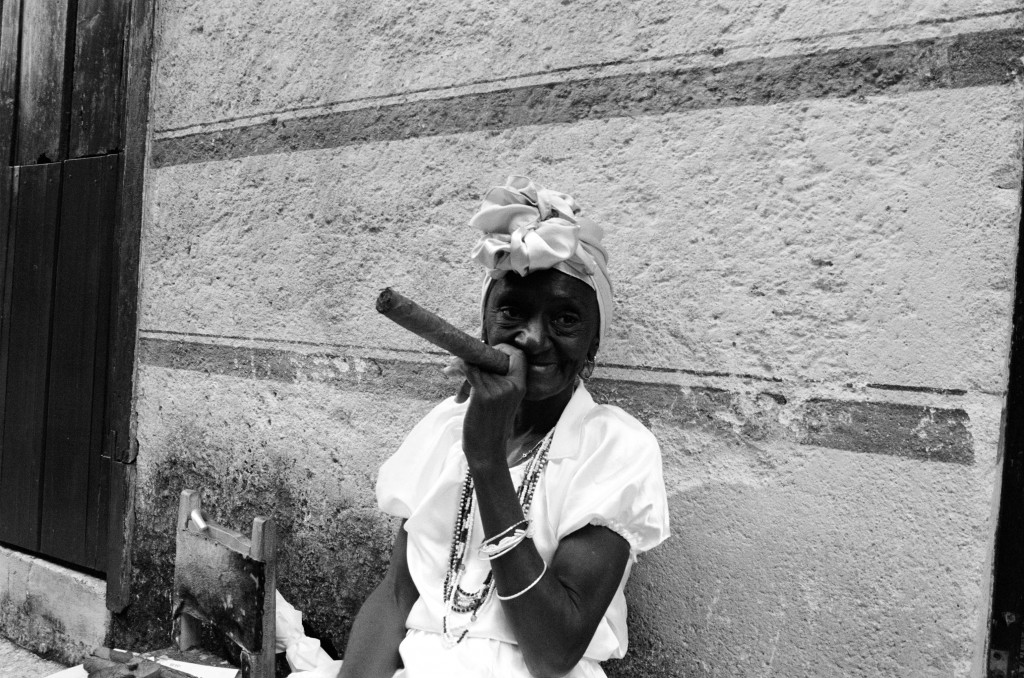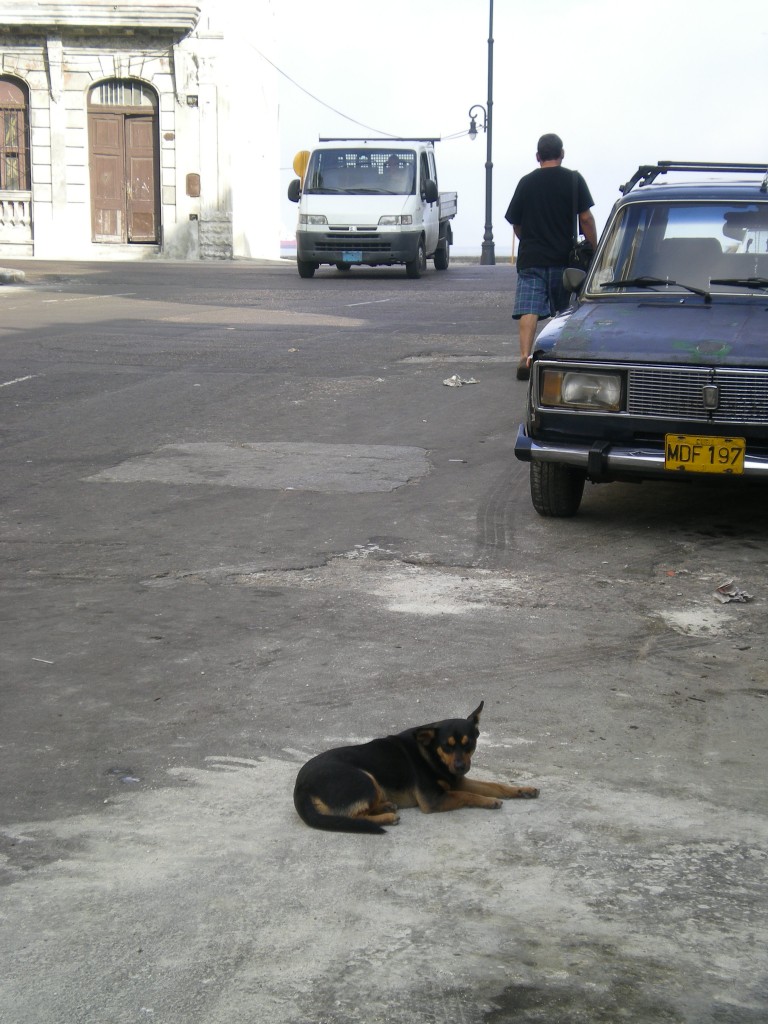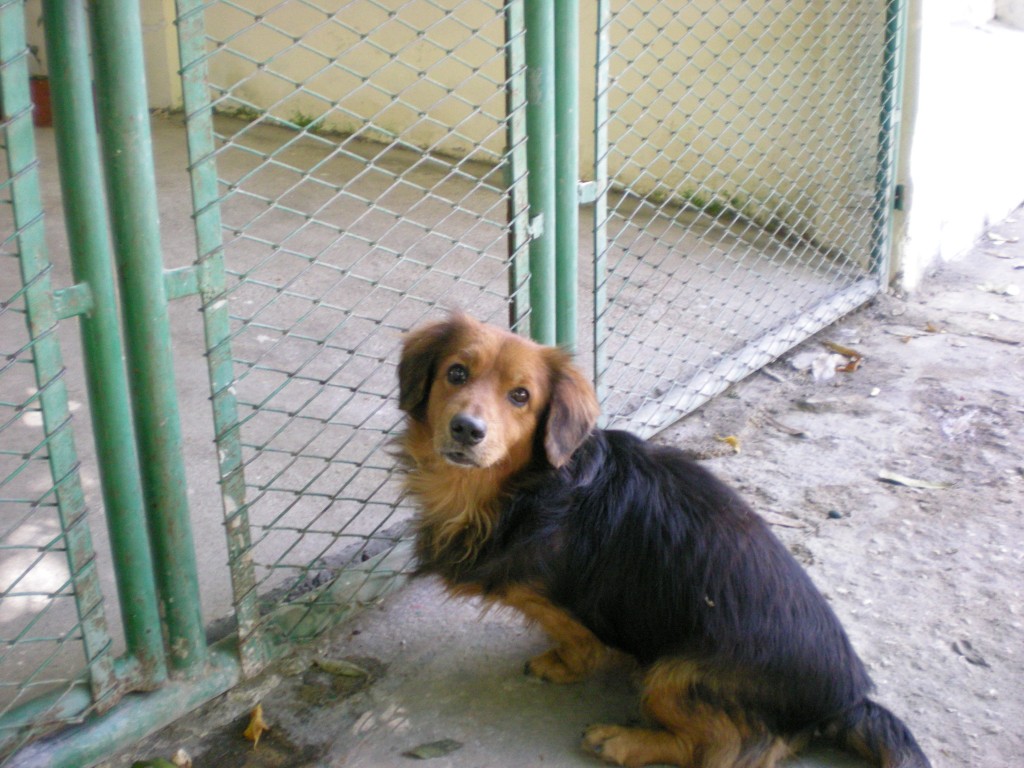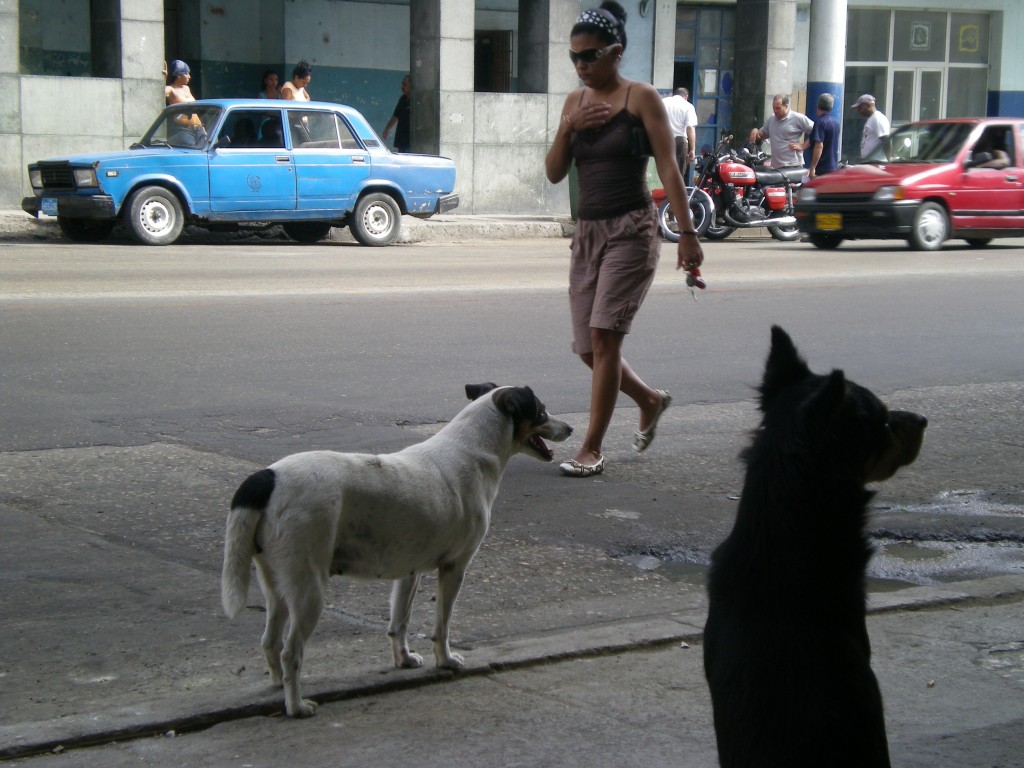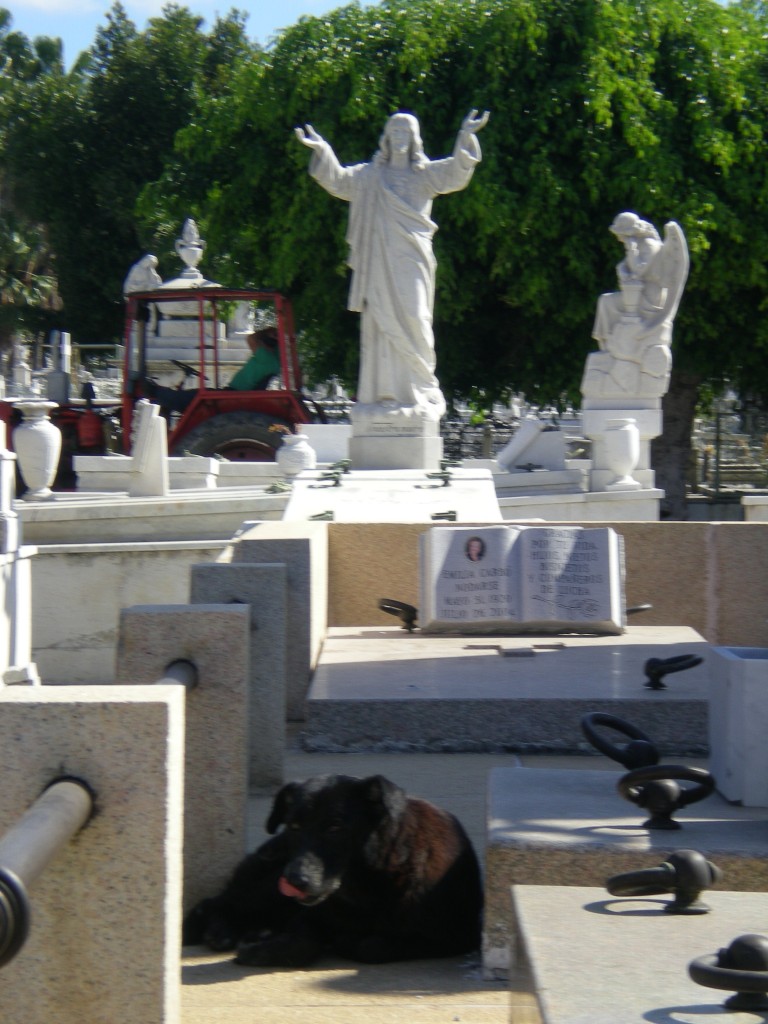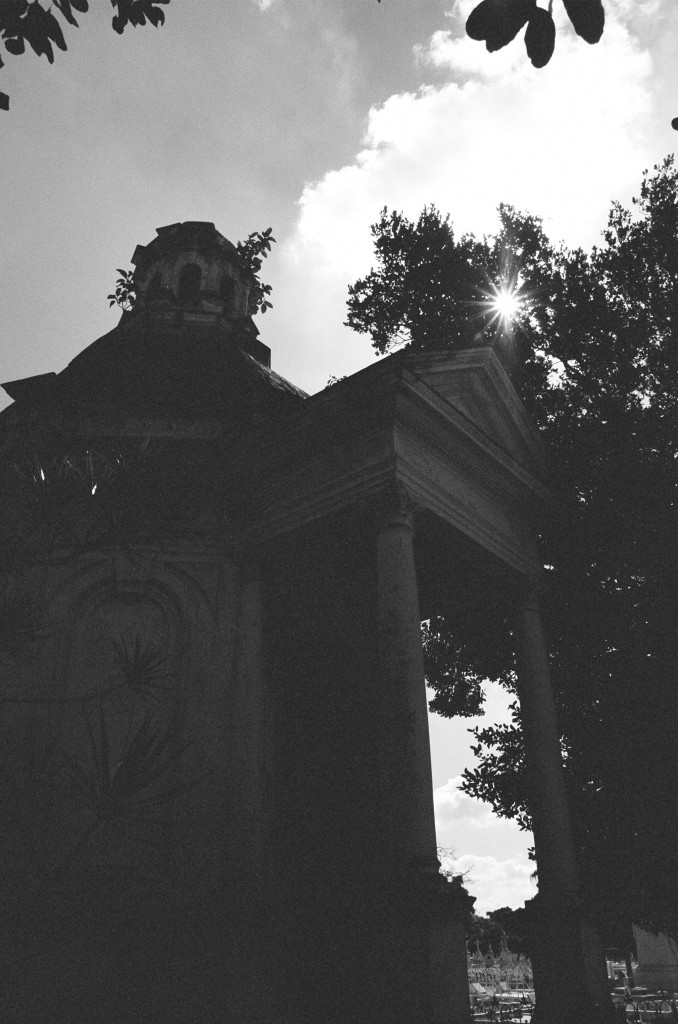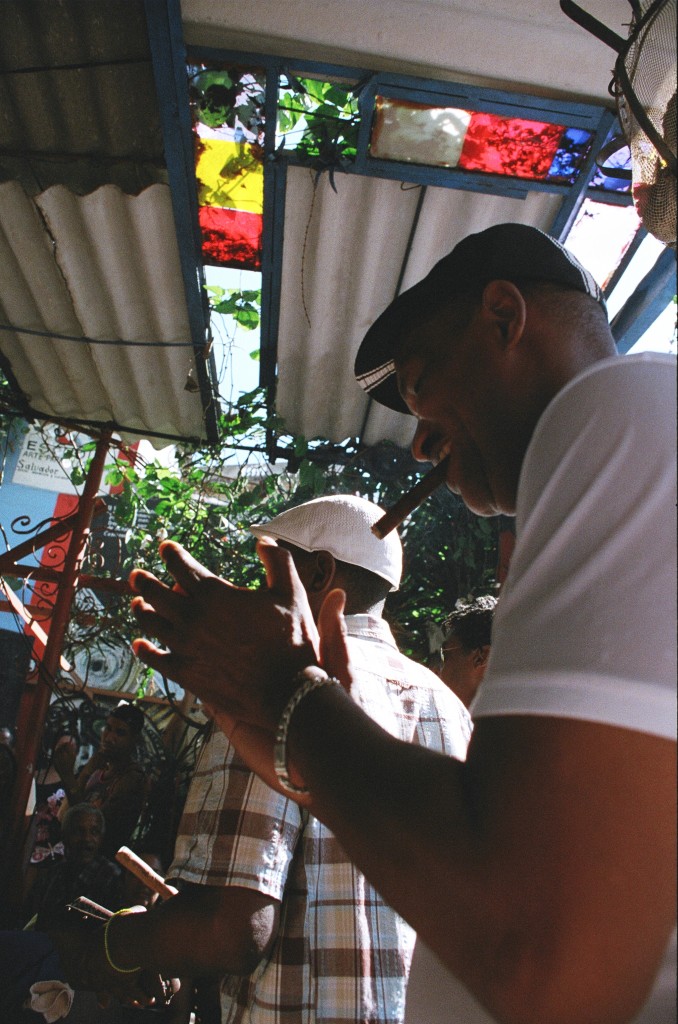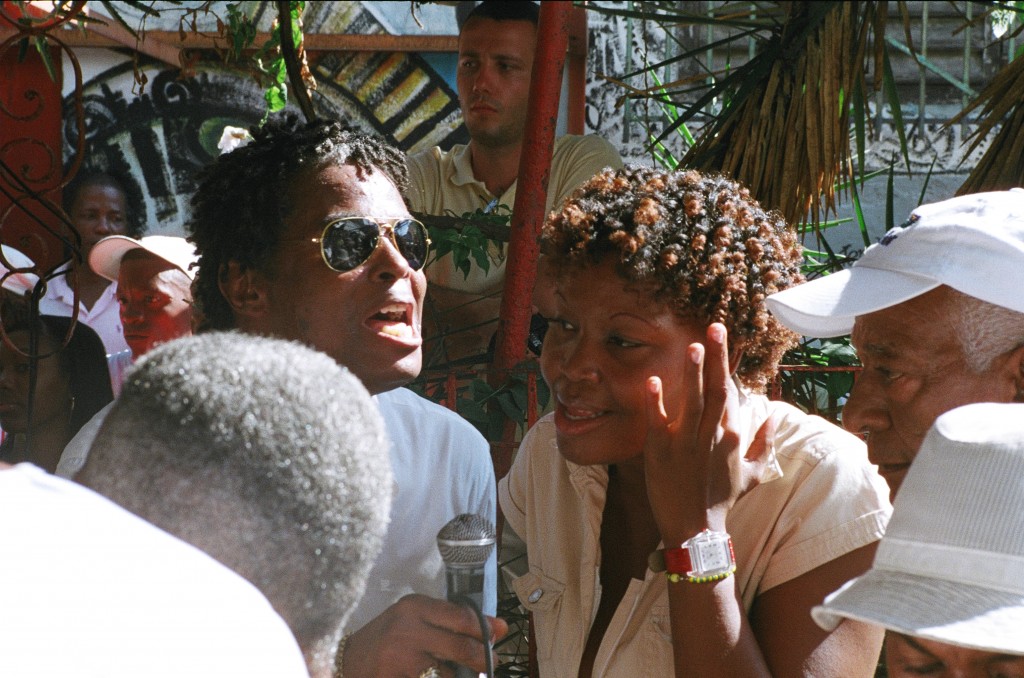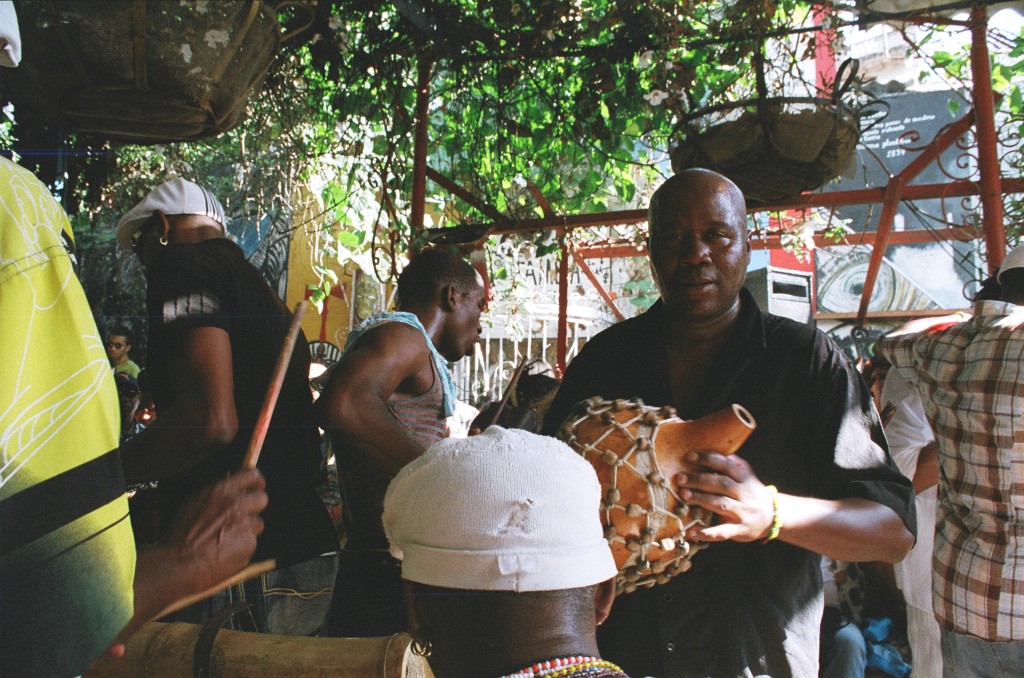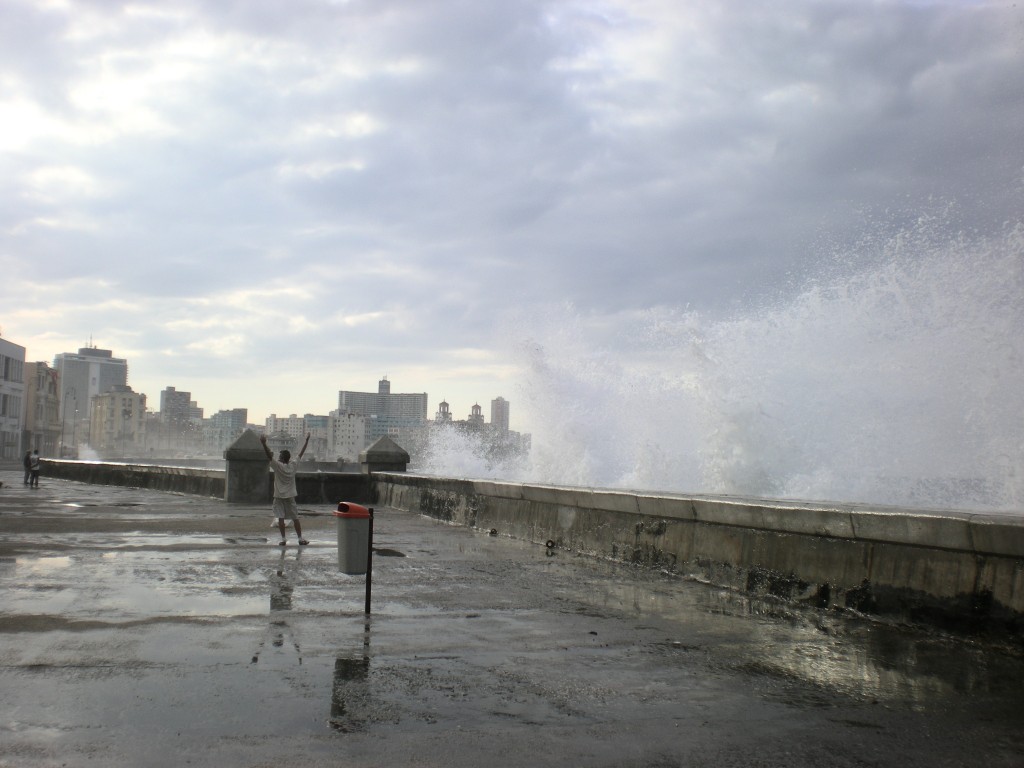Pick-up Dogs How Two Rescue Dogs Save the West from Being Won
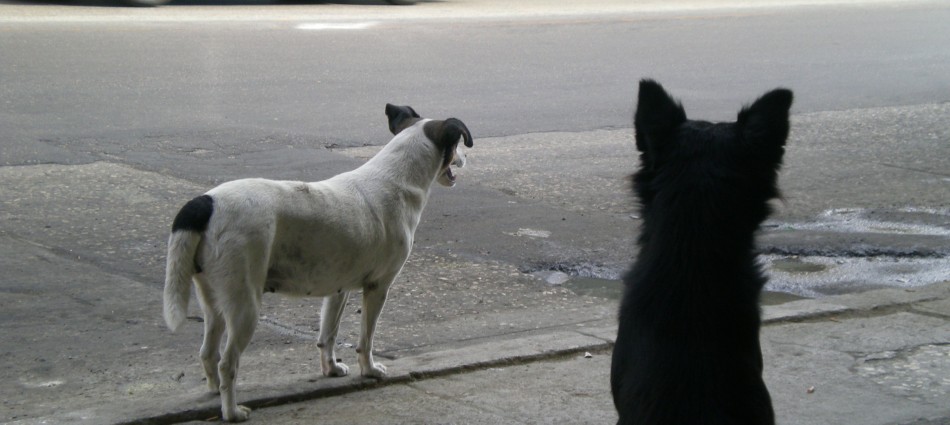
Dogs in Cuba
In 2009, I was given an academic visa to study Cuban culture. I went mainly to pay homage to some of my favorite authors and musicians and to see what the island is really like.
I spent my 10 days in Cuba walking the city of Havana. When I travel, I like to constantly be on my feet, either walking or taking public transportation. I walked most every corner of the city, even the corners that not many tourists go to. While I was there, I missed my own dogs back home so much that I took some pictures of dogs in Havana, especially several that look like my Lupe.
There are a lot of Canadian and European tourists who visit Cuba. They come to have the Club Med experience and sit on some of the world’s most beautiful beaches (which, incidentally, Cubans aren’t allowed to enjoy) and relax in very luxurious hotels. Most of these Canadian and European tourists never see Cuba, but the inside of a large air conditioned tour bus and fine hotel rooms. Which is fine. But there are a lot cheaper places to go have the beach and sun experience. Cuba is very expensive. I don’t recommend a casual visit to Cuba, but if that’s your bag, go for it.
The reason Cuba is so expensive is that there are two currencies, and thereby two Cubas. One currency is the CUC, the convertible note that links with the US dollar. The other currency is the peso, which might as well be play money because you can’t get anything with it. I can’t remember the numbers, but the peso is equivalent to a fraction of a penny.
Like other communist countries, Cuba has a rations system. I’m including a picture of a Rations book. 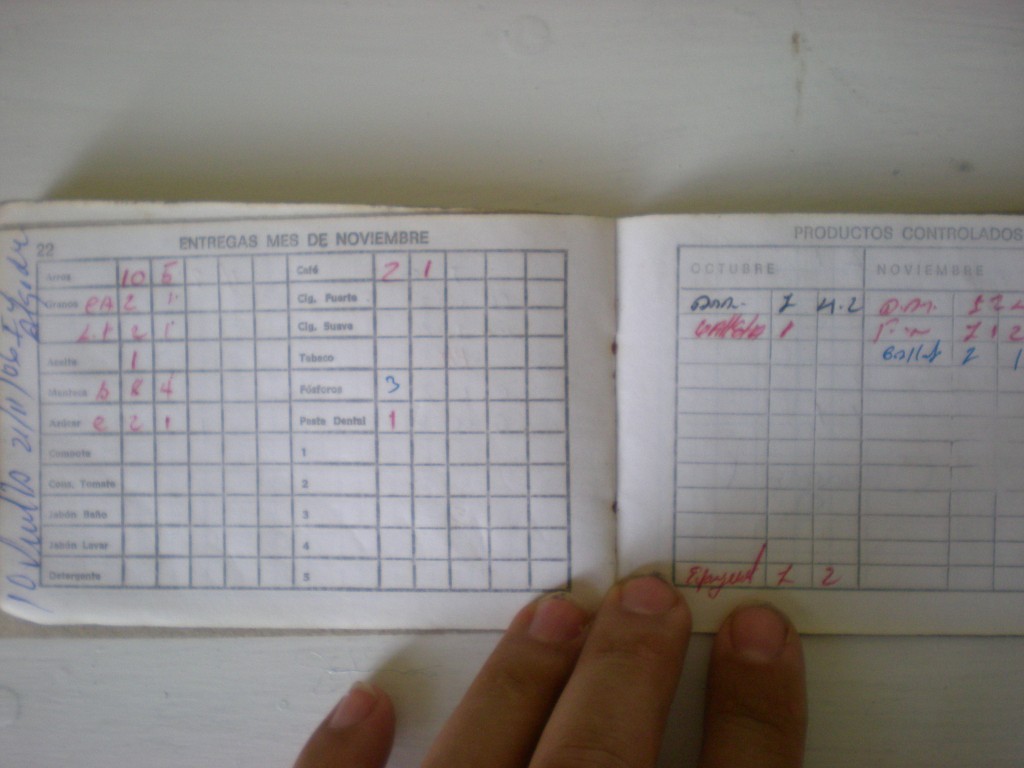
It must be noted that no Cuban family could possibly live off of their rations. As a result, you have a massive black market that is supported by money from tourism. Once again, my numbers are ball park figures, but the average Cuban cab driver can probably make the equivalent of $60 a day if he works hard.
The average Cuban doctor makes about 8 bucks a day. The same goes for other tourism industries like prostitution. Yes. Teachers and education are more valued in Cuba than they are in many other countries, especially the United States. Yet there are no real incentives to succeeding and working a “legitimate” job like a doctor or teacher. Yet Cubans do teach and work as doctors. And the island itself seems to keep working in its own strange ways. Of course, many Cubans are lost between the cracks. People slip between the cracks in lots of places.
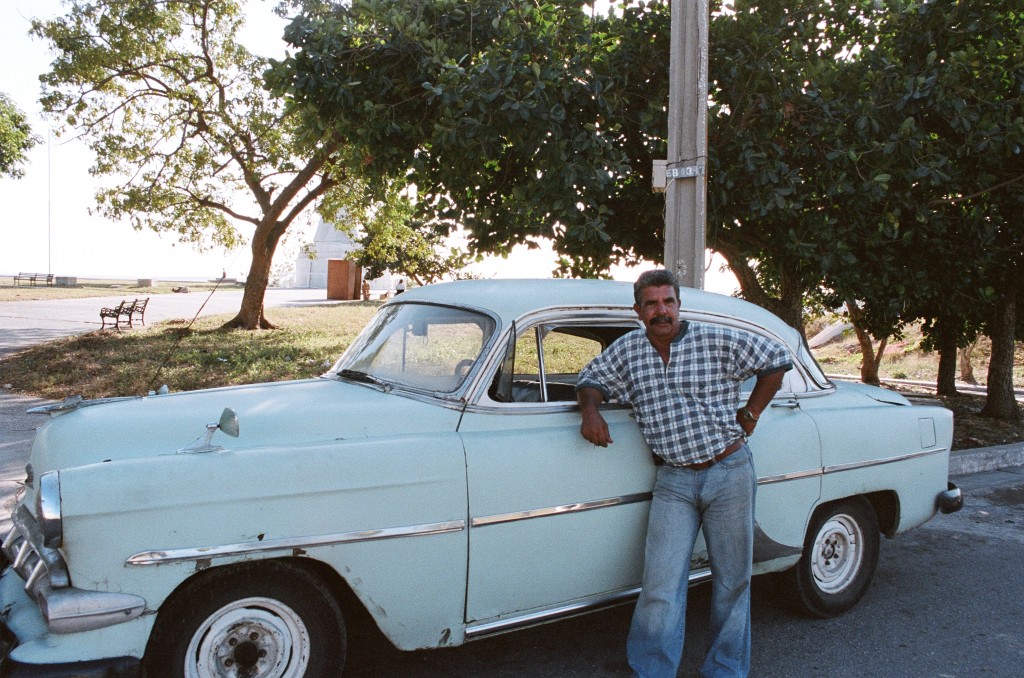 Here’s a cabbie and his ’54 Chevy. The old American cars are so prominent in Cuba because of the embargo. There are lots of clubs that get together to find parts for their old gems.
Here’s a cabbie and his ’54 Chevy. The old American cars are so prominent in Cuba because of the embargo. There are lots of clubs that get together to find parts for their old gems.
So the two Cubas are: 1) a rations-based, poorer society that struggles to get by with not a lot of material goods; and 2) a more affluent society that lives in a separate reality, getting money from foreigners either through tourism or through remittances that come from family members in the United States. You’ll see the latter group at night clubs that are expensive even for western standards and they’ll be wearing expensive fashion. You’ll see the former Cuba on the street talking and getting by, arreglando, making due. Passing any store on the street you can easily guess if it’s a CUC store or a peso store, and it’s pathetic what you’ll see in a peso store.
The scarcity, in part created by the nonsensical U.S. embargo against Cuba and in part created by nonsensical policies that prevail on the island, is what gives life to Cuban creativity. My favorite picture that I took in Cuba is this one of my Cuban friend Alejandro who made his own computer just by trading to get parts from friends through the black market. I admire the ingenuity.
Other Cuban ingenuity is prevalent in the use of old high-ceilinged Cuban palaces from pre-revolution times that were converted into multi-floored dwellings for multiple families, as you can see in this picture. Because of the embargo, building materials are lacking and many Cuban families living in downtown Havana are literally living in the ruins of old beautiful palaces.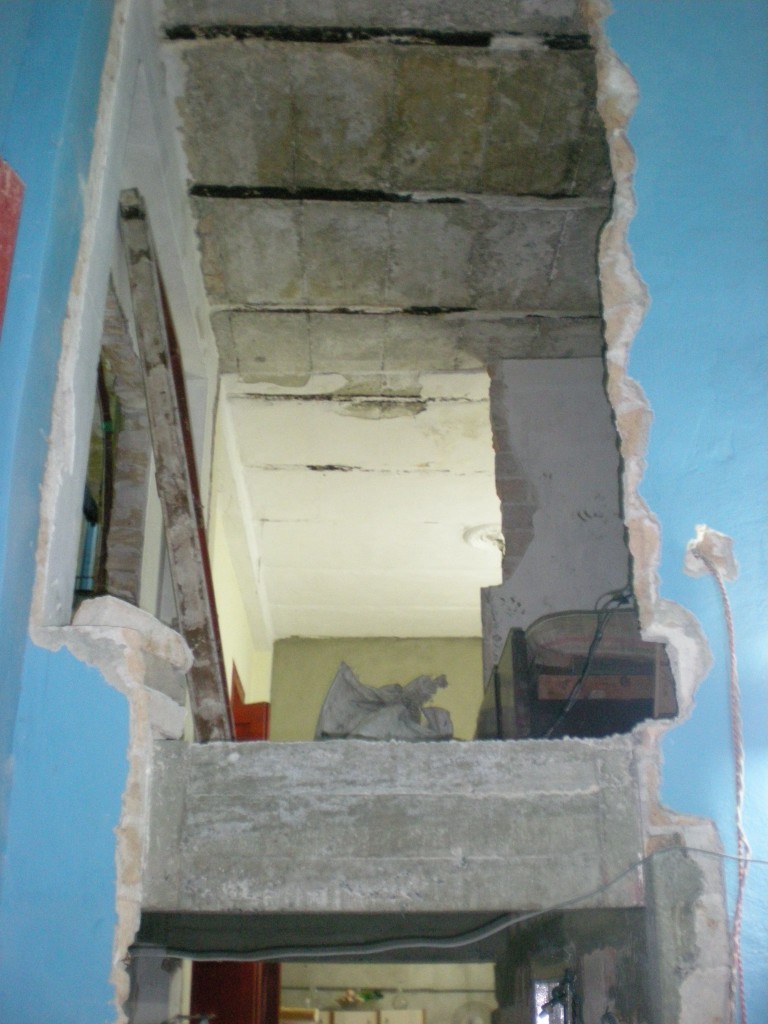
Behind sex and maybe dancing, talking seems to be the Cuban national pastime. I couldn’t walk a block without some Cuban approaching and talking to me. And they don’t seem to ever stop. I was able to arrange a hat trade with this gentleman. 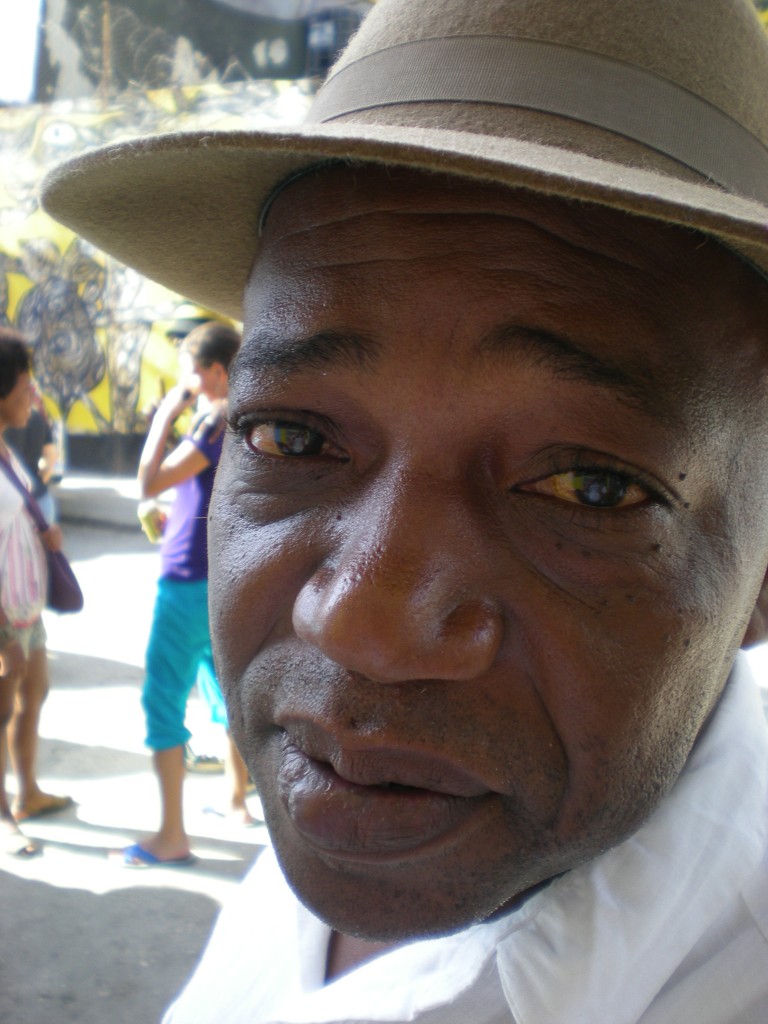
The life of Cuba is on the streets.
Because the life of Cuba is on the streets, the dogs of Cuba are on the streets, as you can see in these photos.
What is it about the cemeteries in New Orleans and Havana that is so captivating? This dog was the first Cuban I met.
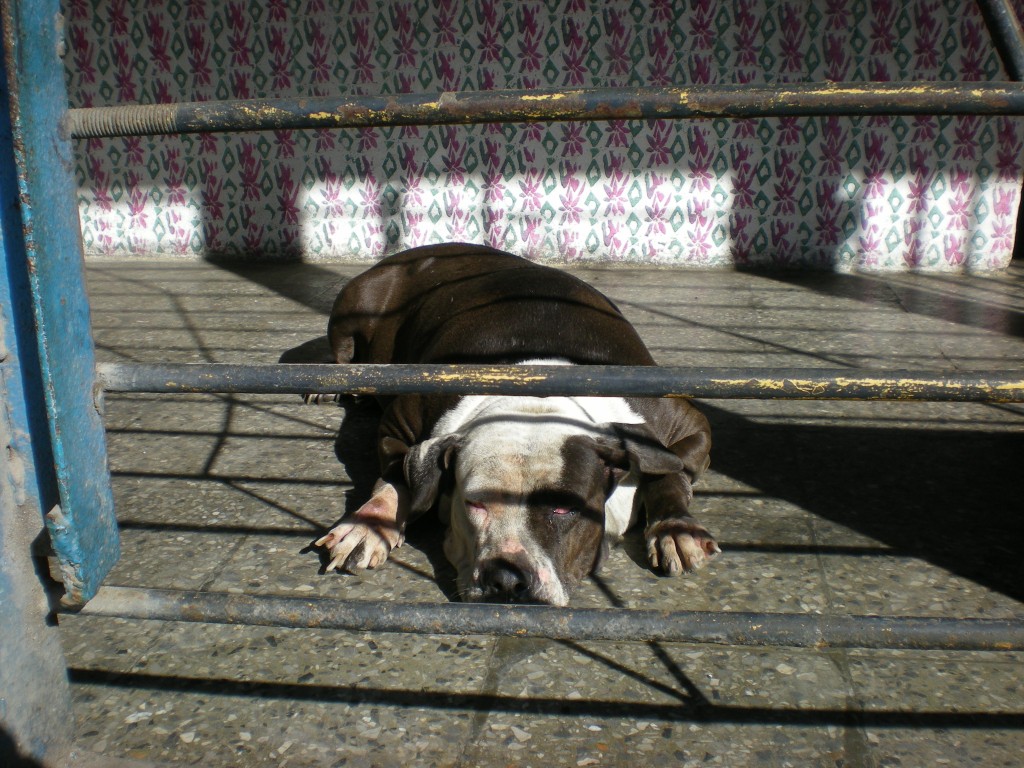 The Cubans, because they enjoy life, love music. And music in the streets is what makes life beautiful.
The Cubans, because they enjoy life, love music. And music in the streets is what makes life beautiful.
Above all, life in Cuba is beautiful and serendipitous, like this photo of a Cuban parting the sea like Moses on the Malecón, another center of life in Havana.
